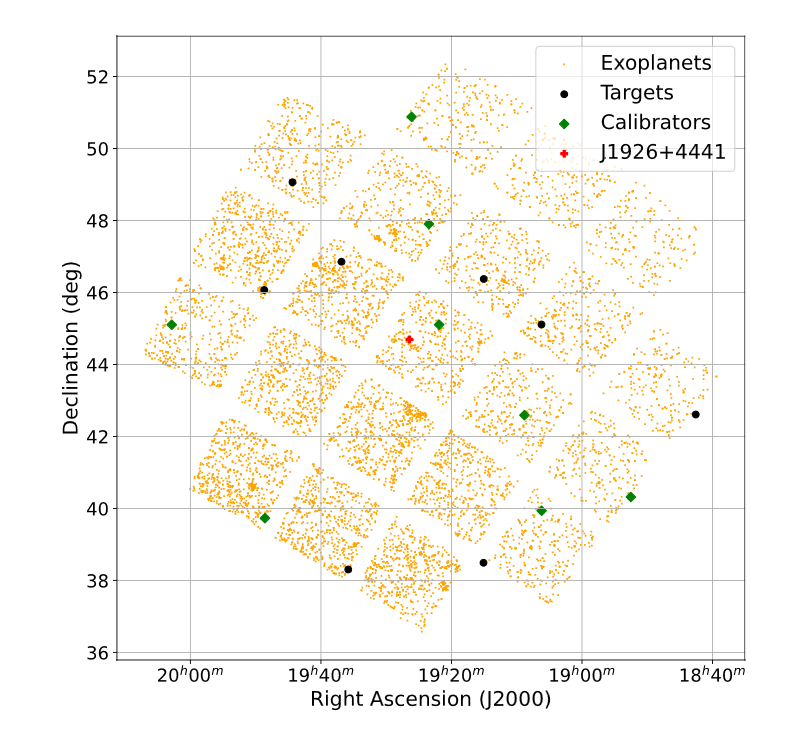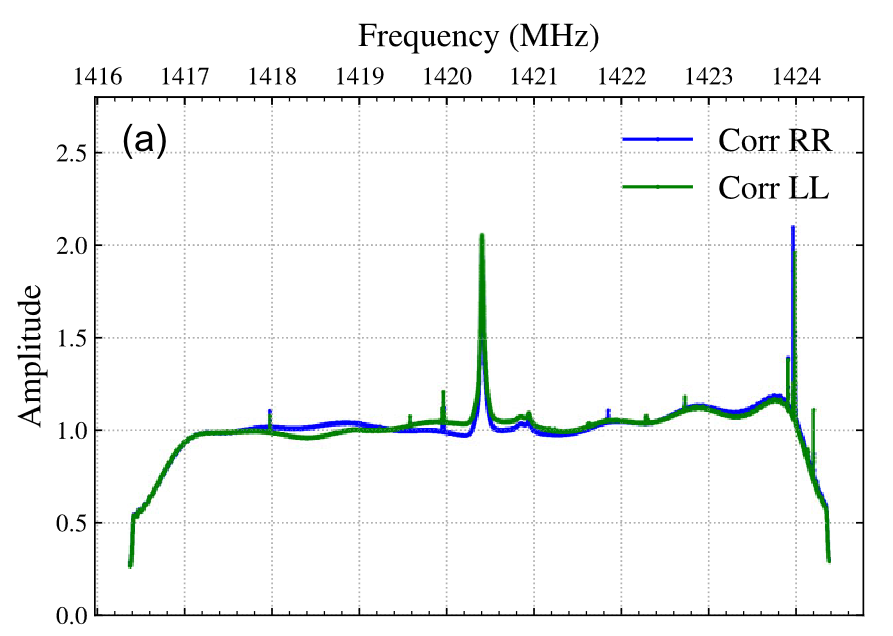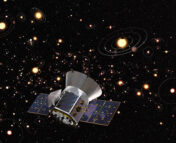
This guest post was written by Cameron Petrusevski. Cameron Petrusevski is a current student at UCLA majoring in atmospheric and oceanic sciences with a minor in film, television, and digital media. He hopes to pursue a career in broadcast meteorology and has always loved astronomy and learning more about our place in the universe. He also loves to live an active lifestyle and play tennis and volleyball.
Title: An Interferometric SETI Observation of Kepler-111 b
Authors: Kelvin Wandia, Michael A. Garrett, Jack F. Radcliffe, et al.
First Author’s Institution: Jodrell Bank Centre for Astrophysics (JBCA), Department of Physics & Astronomy, The University of Manchester, UK
Status: Published in MNRAS [closed access]
Have you ever looked up into the night sky, and wondered about the cosmos, and if it is just us alone in the universe? The search for extraterrestrial life (SETI) has captivated the curiosity of both astronomers and everyday explorers. While there is limited research in the field overall, new technologies are emerging to assist us in the quest to discover the unknowns of the universe. This article helps explain the importance of Very Long Baseline Interferometry (VLBI) in the search for extraterrestrial life, and how the exoplanet Kepler-111b plays a fascinating role in potentially uncovering signs of life.

VLBI uses a network of space and earth radio antennas (such as the one shown in Figure 1) that combine to create a telescope that is over double the diameter of Earth. This allows astronomers to see extremely detailed images of distant objects in space. These can offer multiple advantages to traditional single-dish discs, such as being less susceptible to radio frequency interference that could result in false positives in SETI.

Today’s paper focuses on implementing VLBI when searching for signs of life in distant star systems, specifically in the Kepler field (Figure 2)–a specific region of the sky that was the focus of the Kepler Space Telescope that was launched in 2009. This area in the night sky is of particular interest as it offers a wider field of view with a high quantity of stars, which means there are greater chances to discover and observe planets outside our solar system (exoplanets). The authors of today’s paper observed the Kepler field for two reasons: firstly, to find additional sources in the field to help calibrate future observations, and secondly to look for any potential signs of life in the data. The Kepler field contains thousands of observed exoplanets, including potentially habitable worlds like Kepler-442b, which is why astronomers are excited to continue exploring the Kepler field along with other regions in space with VLBI.
Finding Secondary Calibrators
Researchers used the European VLBI Network (EVN) to observe any potential objects in the Kepler field that could act as a point of reference for measuring interference in the radio waves. These are known as secondary calibrators and can help in hopefully setting up future use of VLBI in this region of the sky and support further SETI surveys in different regions. The hope is that there would be signals emitted from these secondary calibrators–which could be stars, planets, or other celestial objects that are well-known markers for the VLBI–which could then be used to improve the quality of interferometric measurements. Unfortunately, none of the secondary calibrators showed any significant signal. However, a primary calibrator–which acts as a standard compared to secondary calibrators–named J1926+4441 was observed close to the potential rocky exoplanet Kepler-111b.
Kepler-111b
Kepler-111b is a Super-Earth that orbits the Kepler-111 star system, which is located 2,144 light years away from Earth. Astronomers found interesting spectral features, shown in Figure 3, in their observations of the primary calibrator nearest the exoplanet. Spectral features are unique patterns or lines observed in the light spectrum from celestial objects and can provide information regarding the objects’ temperature, composition, and density. These findings led to follow-up observations of J1926+4441, with the goal of narrowing in on the patterns recorded by the spectrum near the planet and seeing if they could lead to signatures of life.

An Unexpected Signal
Unfortunately, there were unintended results with the data, as these specific patterns were caused by Hydrogen gas (H I) being present in the telescope beams which skewed the data taken from the VLBI. Typically these disturbances would not be noticed or recorded, however, there was a note that these observations were taken with only seven of the expected thirteen antennas due to some technical failures, and thus could have lowered the resolution enough for the hydrogen gas beams to become visible.
To confirm this hypothesis, researchers conducted a simulation test to replicate the interference seen in the VLBI data. The results confirmed the disturbance in the data was from the unexpected gas.
Looking for Technosignatures
From here, the focus shifted looking for other signs of life (known as technosignatures) in the channels unaffected by the hydrogen beams, with the goal of analyzing the exoplanet Kepler-111b more closely with VLBI. To do this, the authors used the GAIA catalog (which gives insight into specific characteristics of various celestial objects in the night sky, such as their position, distance, size, and other astronomical significant features) to pinpoint the position of Kepler-111b. The astronomers then searched for any indications of signals with a signal-to-noise ratio (SNR) that exceeded a value of seven at this position, giving way to the possibility of transmitters in the area.
These transmitters would be indicative of technosignatures in the regions near Kepler-111b, which are used when searching for life forms outside of our planet. Technosignatures are any measurable property that indicates the presence of technology use. If there are signs of technology use near one of these planets, there is a good chance that life could exist on or nearby that planet, which in this case is Kepler-111b. Unfortunately, there were no obvious detections of any technology used near the planet at the time of measurement.
Moving Forward
Although the authors of this paper didn’t find anything in their search, it was still a very important step in the SETI process. Refining our data collection methods and improving how we use the instruments we already have are both critical to doing science in the future. The search for life outside our own planet has been a long and frustrating process, however, the use of instruments like VLBI can prove to be advantageous in the detection and follow-up for potential candidates of interstellar life. If life does exist in one of the billions of galaxies in the observable universe, continuous efforts to use and improve these technologies will help find the answer we have been searching for since we first looked up into the night sky!
Astrobite edited by: Delaney Dunne
Featured image credit: NASA Ames/JPL-Caltech/Tim Pyle




